Menu
Physics Lesson 22.1.4 - Main Features of Planets
Please provide a rating, it takes seconds and helps us to keep this resource free for all to use
Welcome to our Physics lesson on Main Features of Planets, this is the fourth lesson of our suite of physics lessons covering the topic of Earth and Other Celestial Bodies, you can find links to the other lessons within this tutorial and access additional physics learning resources below this lesson.
Main Features of Planets
Now, let's take a closer look at some general features of each planet starting with the earthy planets.
The Earth
The Earth is the most special planet in the Solar System because it contains water, oxygen in free state and it provides the right conditions to support life. Moreover, the Earth manifests tectonic activity, in the sense that its giant plates are dynamic, i.e. they shift in respect to each other. The Earth has a gaseous protective layer (known as atmosphere) of about 100 kilometers thick that is composed by Nitrogen (78%), Oxygen (21%) and other gases, mainly Carbon Dioxide (1%). The range of temperatures in inhabited areas ranges from -20° C to +40° C (-4° F to +104° C) with an average of +15° C but there are exceptions where temperature values extend beyond this range during specific times of the year (extreme weather conditions).
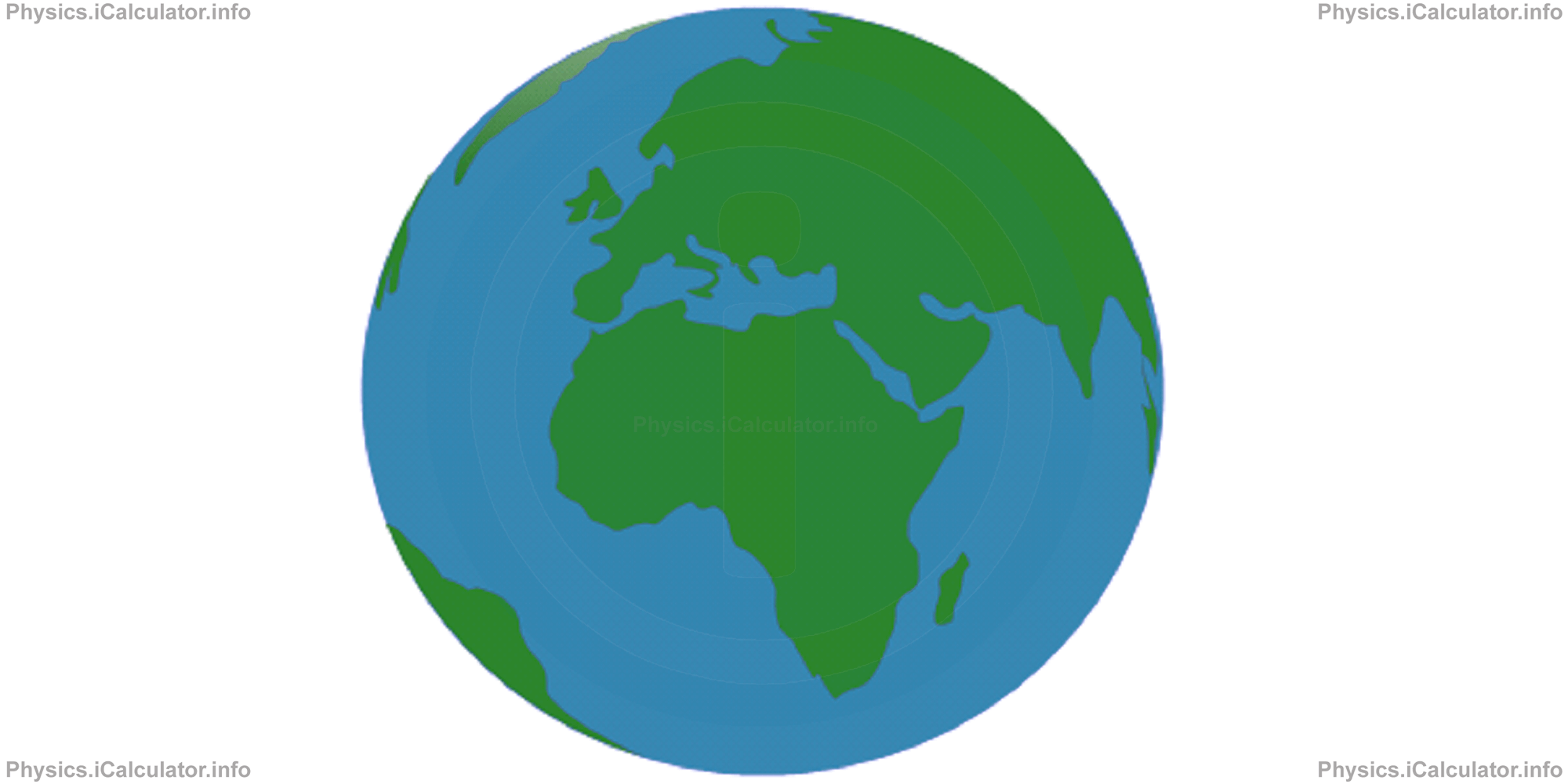
About 71 percent of the Earth's surface is water-covered (the rest is covered by soil), and the oceans hold about 96.5 percent of all the Earth's water. We take the sea-level as reference for the surface of the Earth. The Earth contains a large number of mountains which rise up to a few kilometres above sea level and deep oceans extending a few kilometres below the sea level.
The radius of Earth is 6378 km from its' centre to sea-level. The Mass of earth is 5.91 × 1024 kg and the average density is 5500 kg/m3.
Mercury
Mercury is a planet without an atmosphere. This is because it is the closest planet to the Sun and due to the high temperature of its' environment all gaseous material dissipated a long time ago. There is no geological or technical activity on the surface of Mercury, which is covered by craters. The craters are not produced by volcanos but from continuous bombardment from meteors. Note that, unlike Mercury, meteors do not impact the Earth's surface as atmosphere melts them down during their descent towards the planet.
Due to the lack of atmosphere, mercury temperatures have a wide range of values. Thus, during the day they can reach the value of +430° C while during the night they fall at -180°C.
Mercury has a yellowish color due to its closen proximity to the Sun thought the original color is similar to that of Earth. This reduces its visibility because the Sun color is dominant.
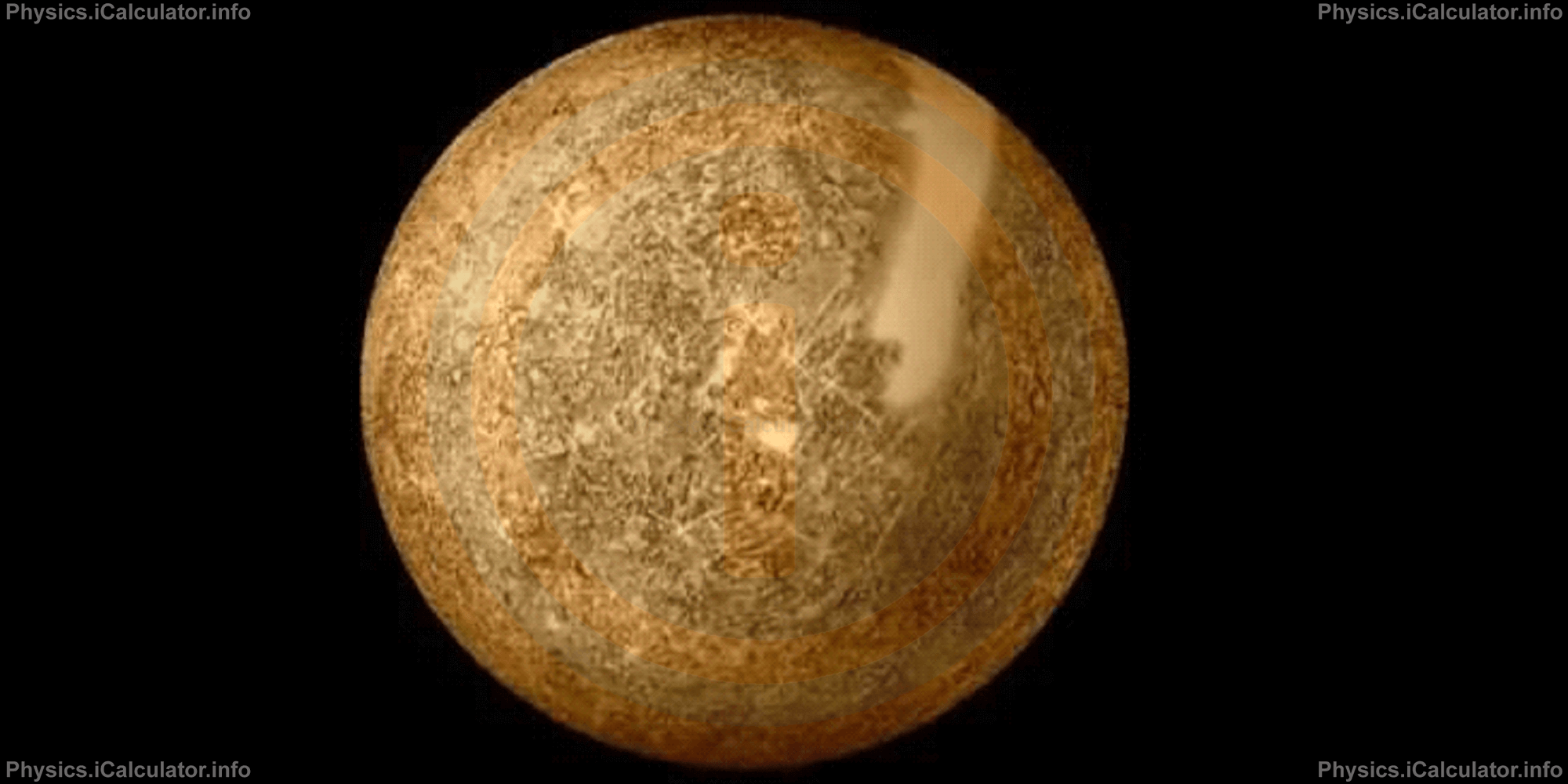
The radius of Mercury is 2439 km and its mass is 0.055 MEarth or 3.25 × 1023 kg. The average density of Mercury is 5420 kg/m3.
Venus
Venus (also known as the morning star) is the most visible planet on the sky. It looks as the brightest star in early morning and after the sunset. This is why people have always thought it is a star, not a planet. Venus has a very thick atmosphere (about 100 times thicker than that of Earth) composed mainly by Carbon Dioxide. The large clouds keep the heat inside the atmosphere producing a very intense greenhouse effect. As a result, the temperature of Venus is very high (471° C on average, with very low variations). The high temperature and atmospheric pressure prevent it from supporting the creation of any living forms.
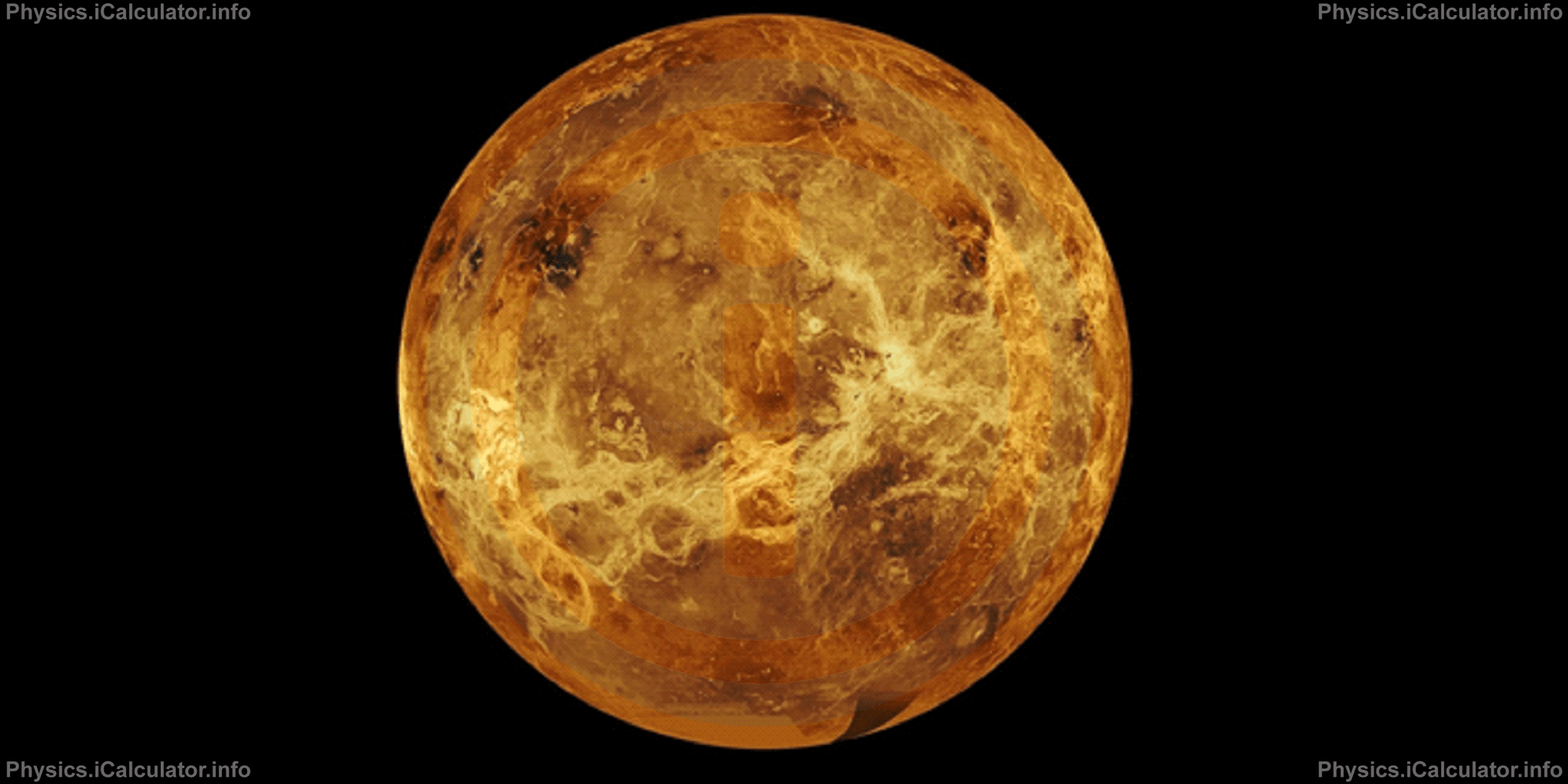
From a geological viewpoint, Venus is as active as the Earth. A number of space probes (more than 20 so far) have entered the atmosphere of Venus for exploration purposes but without touching its surface because of the high temperatures.
The dimensions of Venus are very close to Earth (Venus is slightly smaller). The radius of Venus is 6057 km and its mass is 4.87 × 1024 kg (0.815 MEarth). The density of Venus is 5240 kg/m3.
Mars
Mars is also known as the "red planet" due to its appearance, the predominant red colour is due to the presence of iron oxide.
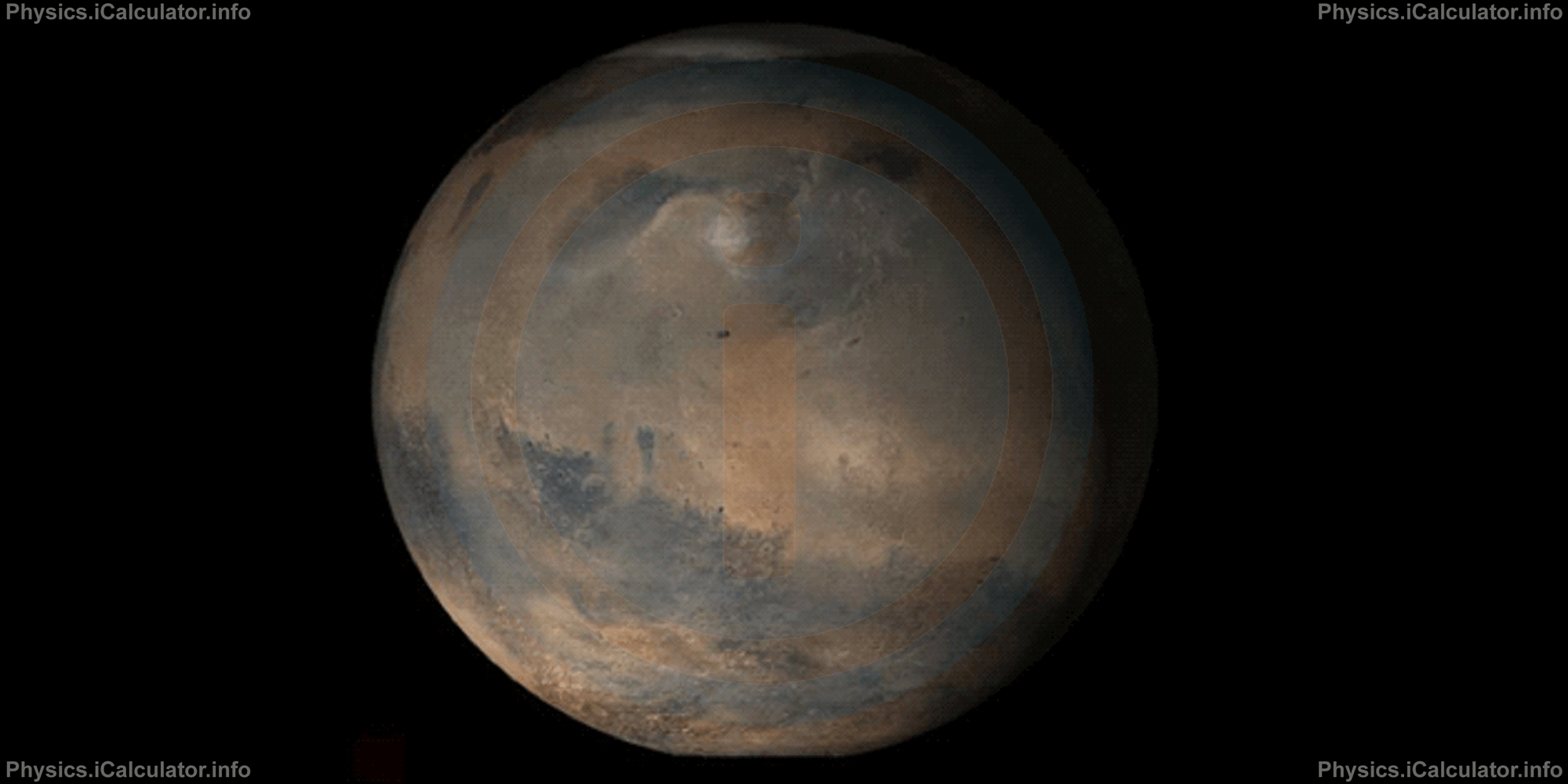
There is an intense meteorological activity on Mars. There are considerable variations of temperature in different seasons of the year but usually they vary from -150° C during the night to +20° C during the day where the average value is -30° C. Mars surface is covered by mountains and craters; there are continuous ice melting and freezing processes occurring on its surface.
For a long time, Mars has been considered as the twin planet of Earth and scientists believed that there might be suitable living conditions on it. However, closer studies performed on Mars surface using spatial probes have excluded this possibility. Recently, it was discovered that the conditions on Mars are very hostile to life. There is no water steam in its atmosphere (which is much thinner than the atmosphere on Earth), there is too little water on its surface, temperature variations are large, etc.
Mars atmosphere is mainly composed of carbon dioxide (95%), molecular nitrogen (2.8%) and argon (2%).
As for geological activity, Mars lies in-between the Earth (which has high geological activity) and Mercury (no geological activity).
Mars has a mass of 6.417 × 1023 kg, a radius of 3389.5 km and an average density of 3933 kg/m3.
Now, let's discuss some basic features of giant planets. They are Jupiter, Saturn, Uranus and Neptune, as explained earlier.
Jupiter
Jupiter has an atmosphere made up predominantly of hydrogen which accounts for 90 percent of the atmosphere. Most of the remaining 10 percent is composed of helium. A very small fraction of the atmosphere is made up of compounds such as ammonia, sulfur, methane, and water vapor. The atmosphere is very stirring, with continuous whirlpools, cyclones and other strong winds.
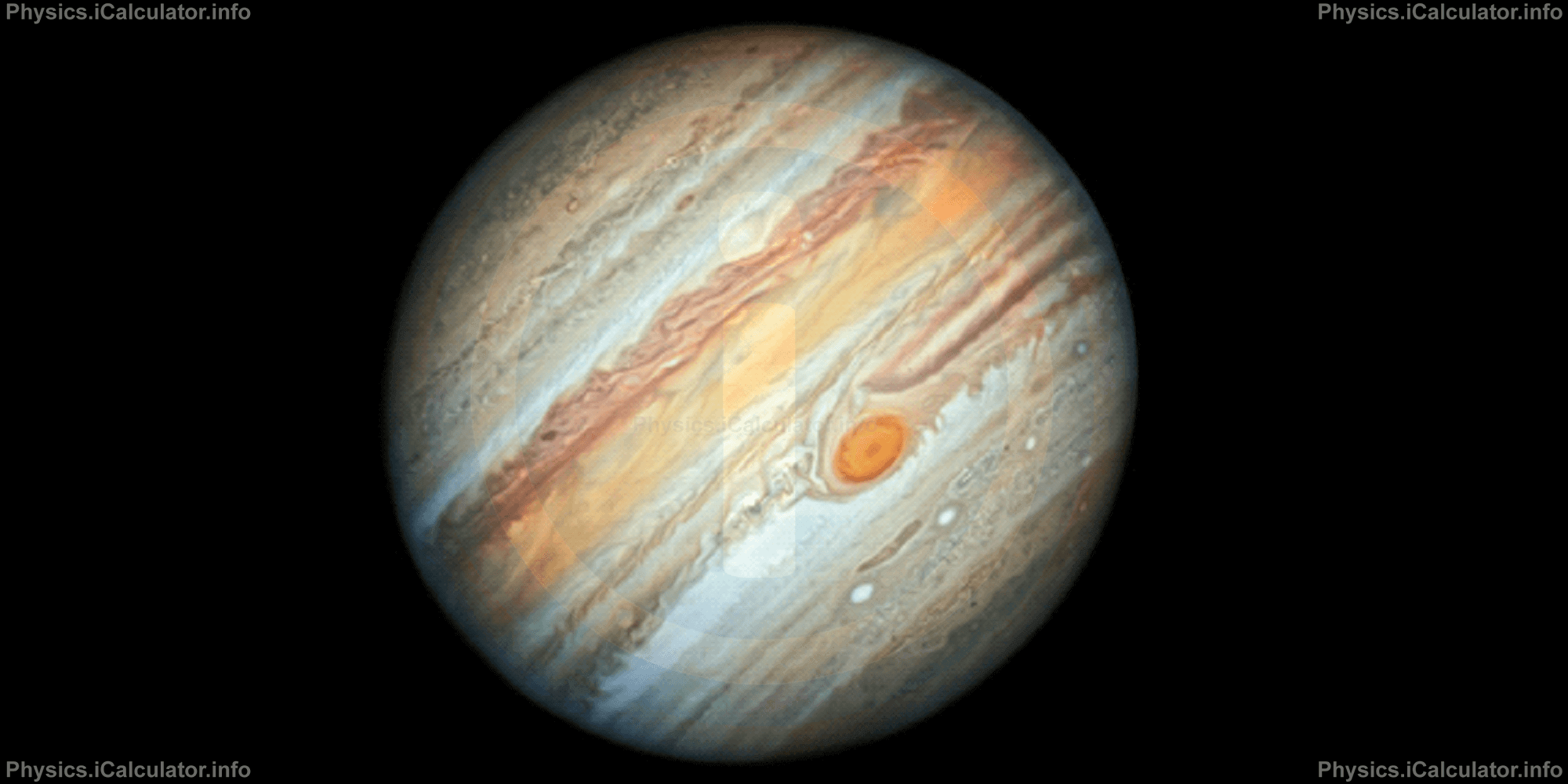
Jupiter is a cold planet due to its longer distance from Sun compared to earthy planets. The average temperature on the surface of Jupiter is -145° C.
Jupiter's mass is 1.898 × 1027 kg, its radius is 71 492 km and the average density is 1326 kg/m3. Jupiter is the largest and heaviest planet of our Solar System. It is 2.5 times heavier than all the other planets altogether. If Jupiter was 10 times larger than its actual size, our Solar System would have two stars.
Saturn
Saturn is a special planet as it is surrounded by a gaseous ring that produces a unique view. Since Saturn is a gaseous planet, its atmosphere (mainly composed by hydrogen and helium) is similar to that of Jupiter, with whirlpools etc.
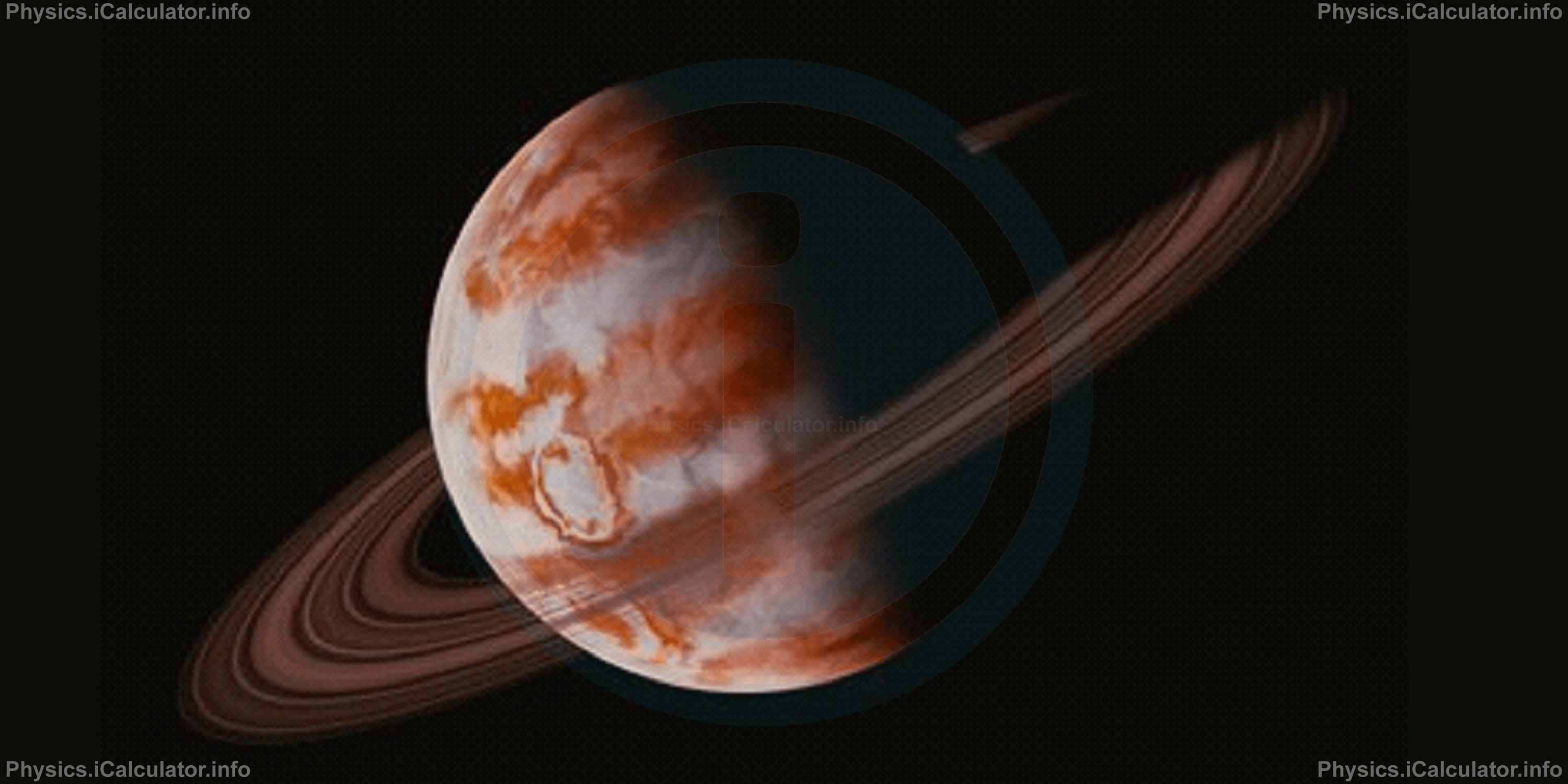
Saturn is the second biggest planet of our Solar System. The radius of Saturn is 60 268 km and its mass is 5.6834 × 1026 kg. The average density of Saturn is 690 kg/m3.
Saturn is very cold; its average temperature on the surface is -178° C despite it has a hot interior, reaching 11,700° C at its core, and radiates 2.5 times more energy into space than it receives from the Sun.
Uranus
Uranus is the third gaseous giant planet of our Solar System. Uranus' atmosphere is predominantly made up of hydrogen and helium. Unlike Jupiter and Saturn, these light gases dominate the outer edges of the planet but are not a significant contributor to the rocky interior. The dull blue color of Uranus is caused by the presence of methane, which absorbs red light.
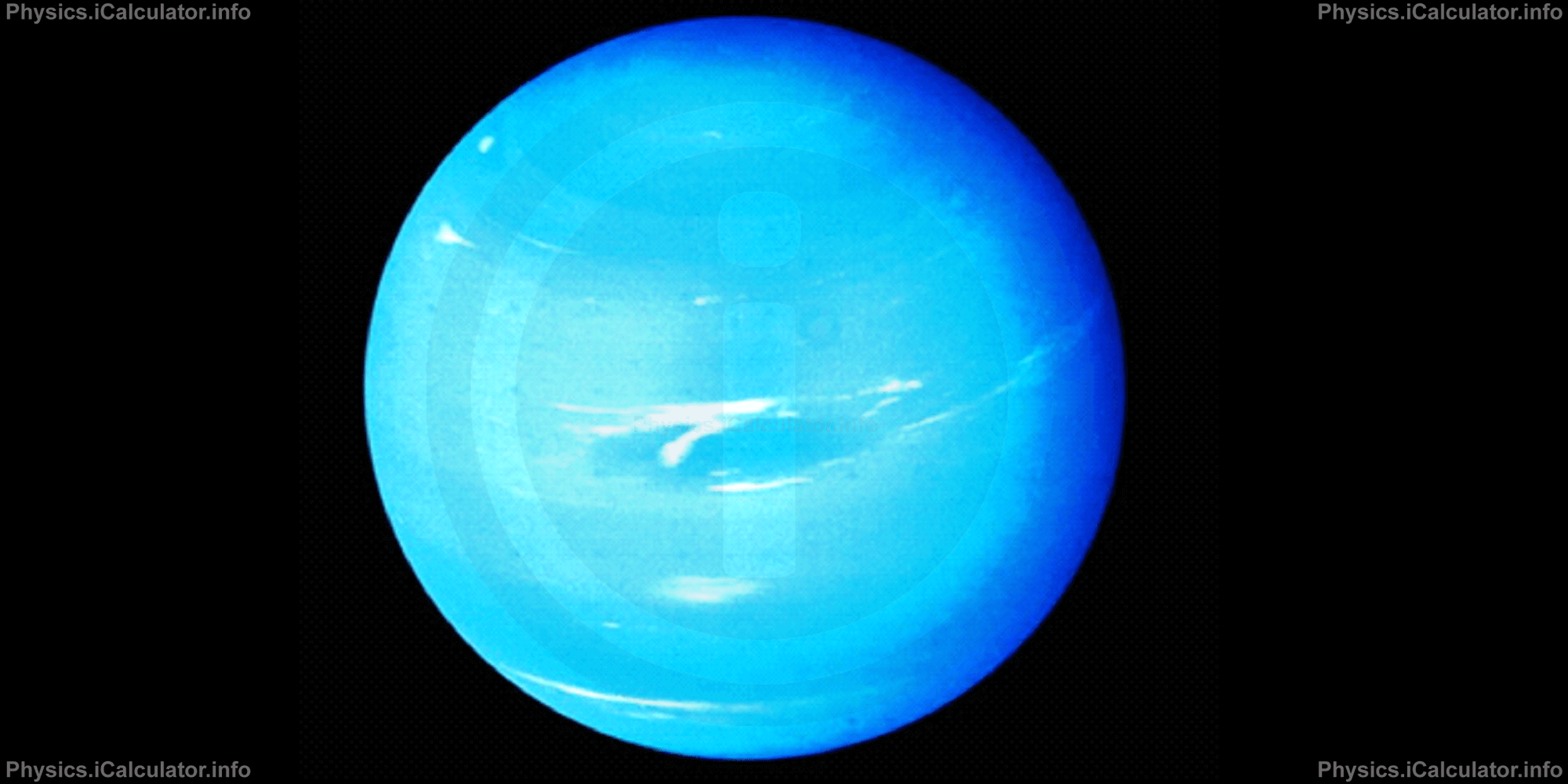
The radius of Uranus is 24 973 km and its mass is 8.681 × 1025 kg. Uranus has a density of 1270 kg/m3.
Uranus is very cold as it is very far from the Sun. The average temperature of Uranus is -195° C.
Neptune
Neptune is the farthest planet from the Sun in our Solar System. Neptune's atmosphere is similar to all the large planets in the Solar System; it mostly consists of hydrogen and helium, with trace amounts of methane, water, ammonia and other ices. Unlike the other gas planets in the Solar System, Neptune's atmosphere has a larger proportion of the ices due to its long distance from the Sun.
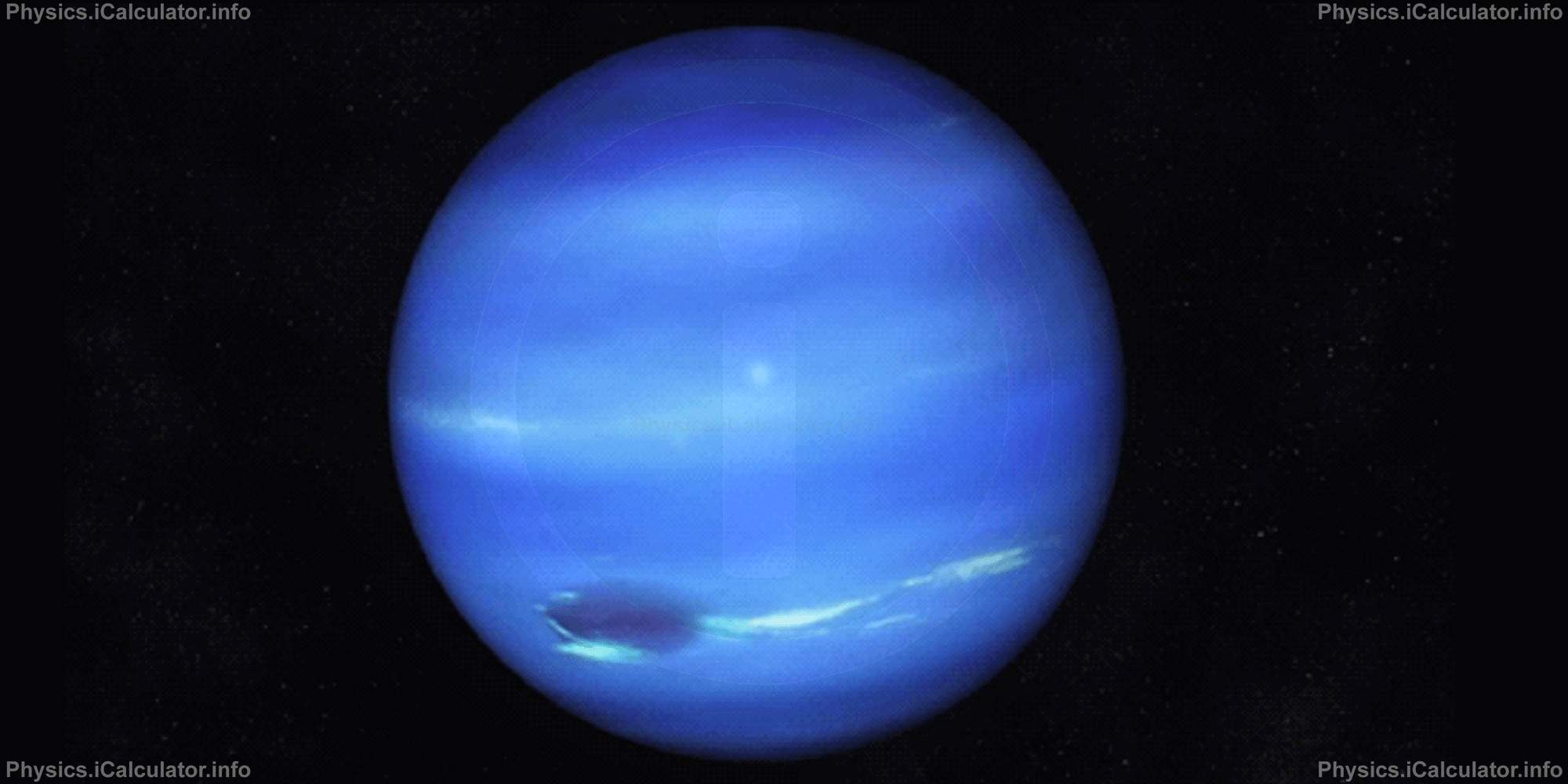
The radius of Neptune is 24 341 km and its mass is 1.02 × 1026,/sup> kg, having a density of 1638 kg/m3.
Neptune is a the coldest planet. Its average temperature is -201° C.
There are many other features associated with certain planets besides those mentioned above, these include: period of revolution around the Sun (the time necessary to make one complete revolution around the Sun) which determines the year duration of that planet, period of rotation around itself (which determines the day duration), the average distance from the Sun, inclination (the angle in degree formed by the equator and planetary orbit), etc. They are summarized in the table below.
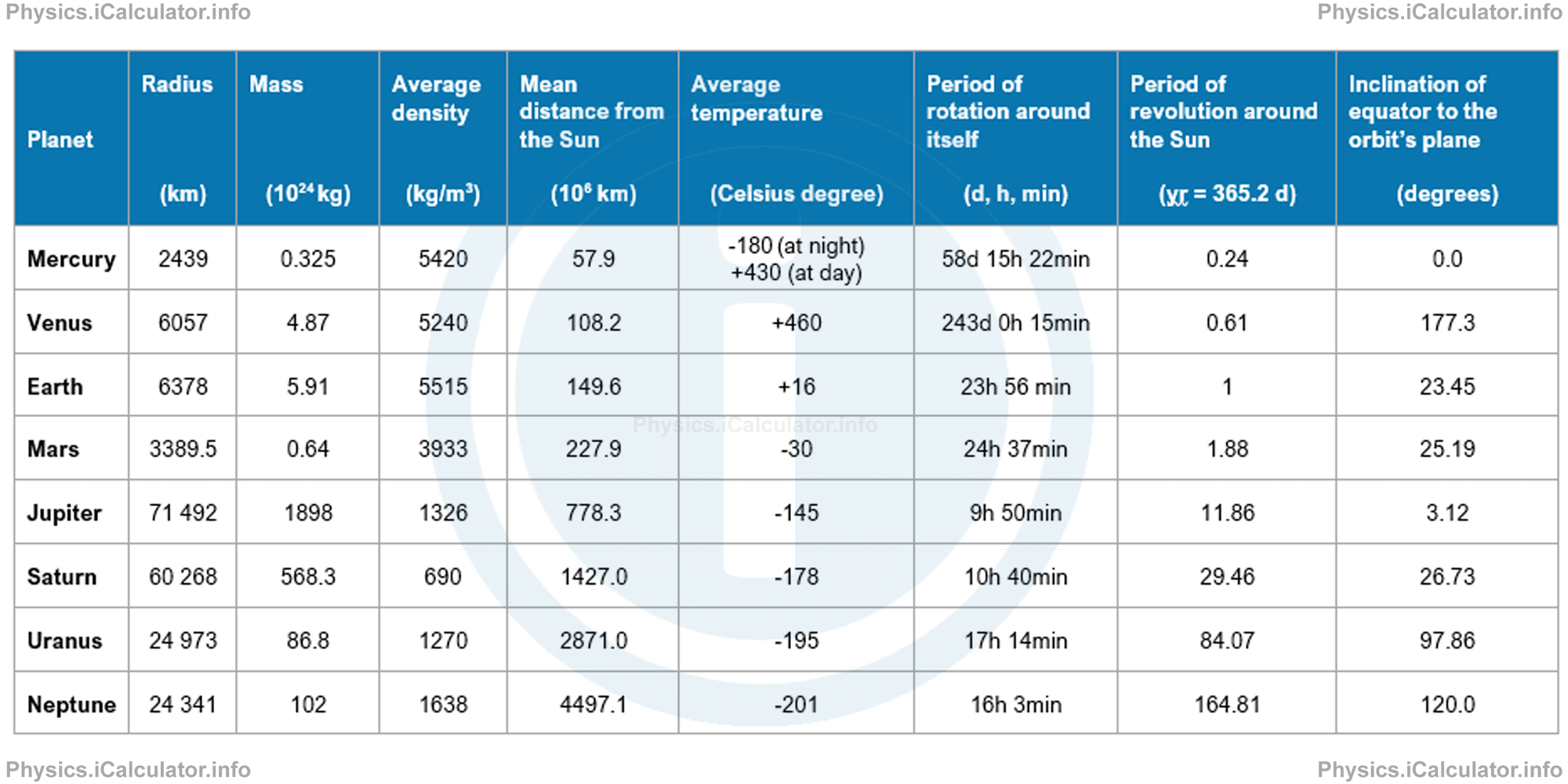
Example 1
Calculate the volume of Earth using geometrical methods and confirm this result using the value of mass and density from the table.
Solution 1
Assuming the Earth is a perfect sphere, we can calculate its volume:
where R = 6378 km = 6.378 × 106 m is the average radius of the Earth, we obtain the Earth's volume:
= 4/3 ∙ 3.14 ∙ (6.378 × 106 )3
= 1.08 × 1021 m3
When using the equation
where ρ = 5515 kg/m3 is the average density of the Earth and M = 5.91 × 1024 kg is its mass, we obtain for the volume V of Earth:
= 5.91 × 1024 kg/5.515 × 103 kg/m3
= 1.08 × 1021 m3
As you see, both methods give the same result.
Pluto
Pluto is another important celestial body which was considered until a few years ago as the ninth planet of our Solar System (it is now considered as a "dwarf planet"). It is the farthest one from the Sun (distance = 5.9135 billion km, radius = 1662 km, mass = 0.002 MEarth). Pluto is an icy celestial body with an average density of 2200 kg/m3 and an average temperature of -229° C.
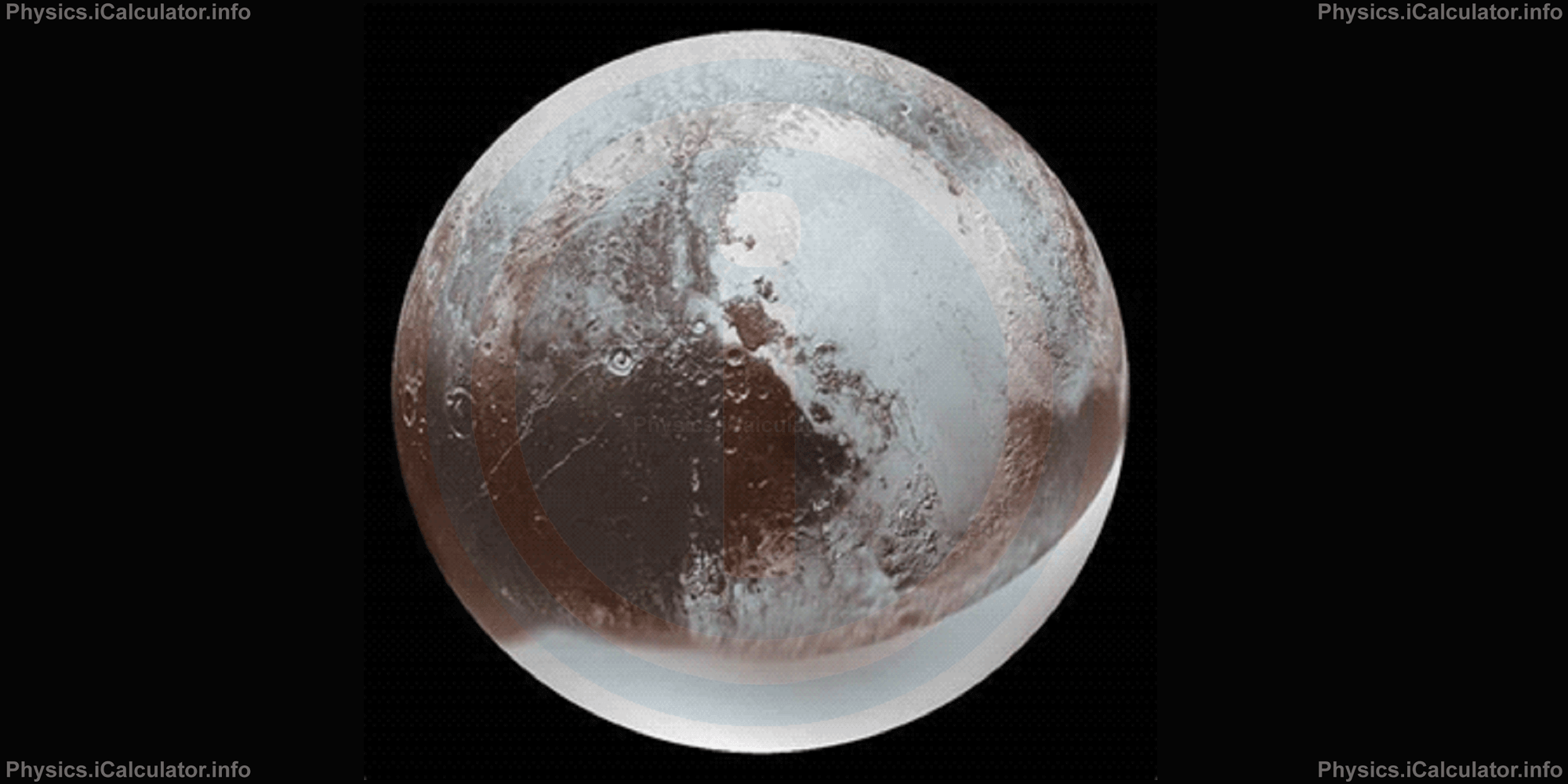
You have reached the end of Physics lesson 22.1.4 Main Features of Planets. There are 6 lessons in this physics tutorial covering Earth and Other Celestial Bodies, you can access all the lessons from this tutorial below.
More Earth and Other Celestial Bodies Lessons and Learning Resources
Whats next?
Enjoy the "Main Features of Planets" physics lesson? People who liked the "Earth and Other Celestial Bodies lesson found the following resources useful:
- Features Feedback. Helps other - Leave a rating for this features (see below)
- Cosmology Physics tutorial: Earth and Other Celestial Bodies. Read the Earth and Other Celestial Bodies physics tutorial and build your physics knowledge of Cosmology
- Cosmology Revision Notes: Earth and Other Celestial Bodies. Print the notes so you can revise the key points covered in the physics tutorial for Earth and Other Celestial Bodies
- Cosmology Practice Questions: Earth and Other Celestial Bodies. Test and improve your knowledge of Earth and Other Celestial Bodies with example questins and answers
- Check your calculations for Cosmology questions with our excellent Cosmology calculators which contain full equations and calculations clearly displayed line by line. See the Cosmology Calculators by iCalculator™ below.
- Continuing learning cosmology - read our next physics tutorial: Sun and Planetary Motion
Help others Learning Physics just like you
Please provide a rating, it takes seconds and helps us to keep this resource free for all to use
We hope you found this Physics lesson "Earth and Other Celestial Bodies" useful. If you did it would be great if you could spare the time to rate this physics lesson (simply click on the number of stars that match your assessment of this physics learning aide) and/or share on social media, this helps us identify popular tutorials and calculators and expand our free learning resources to support our users around the world have free access to expand their knowledge of physics and other disciplines.